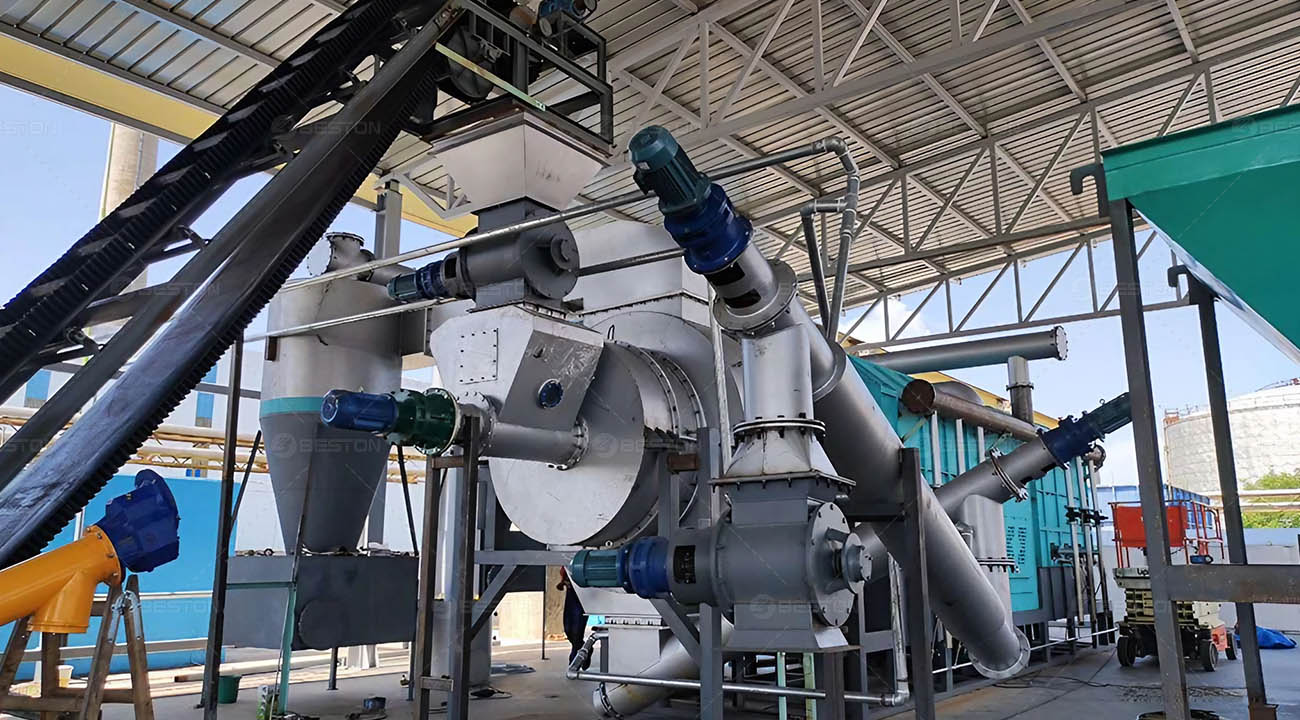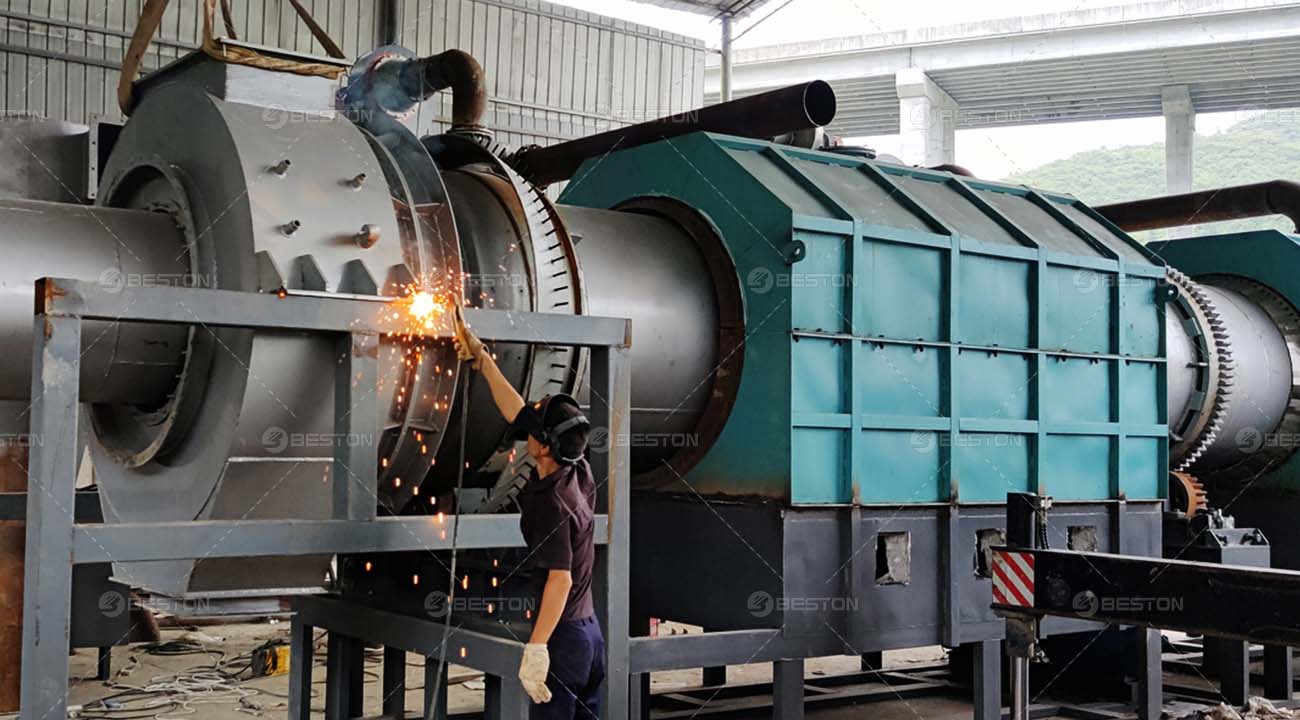Biochar, a carbon-rich material produced through the thermal decomposition of organic matter, has garnered significant attention for its potential to contribute to carbon sequestration. This article explores the intricate relationship between the equipment used in biochar production and the pivotal role it plays in mitigating carbon emissions. To fully grasp this connection, we will delve into the mechanics of biochar production, its effects on carbon sequestration, and the broader environmental and economic implications.

Biochar Production Equipment
Pyrolysis Reactors
Biochar production begins in biomass pyrolysis, a process that involves the decomposition of organic materials at high temperatures in the absence of oxygen. Several types of biomass pyrolysis plants are employed, each with distinct advantages and limitations. Understanding the diversity of pyrolysis reactors is vital to optimizing the production process.
-
Types of Pyrolysis Reactors
- Batch Pyrolysis Kilns: Traditional method with manual control.
- Continuous Pyrolysis Reactors: Automation for efficiency.
- Gasification Systems: Converts feedstock into syngas and biochar.
-
Function and Process
- Heating and Decomposition: How pyrolysis reactors transform feedstock.
- Yield and Byproducts: Extracting biochar and potential energy sources.
Feedstock Selection
Biochar quality depends heavily on the type of organic material used as feedstock. Sustainable sourcing and the choice of feedstock significantly affect the biochar’s properties and the overall carbon sequestration potential.
-
Impact on Biochar Properties
- Hardwood vs. Softwood: Variations in biochar properties.
- Agricultural Residues: A sustainable feedstock option.
-
Sustainability Considerations
- Ecological Footprint: Evaluating the environmental impact of feedstock choices.
- Local Sourcing: Reducing transportation emissions.
Temperature and Residence Time
Achieving the right temperature and residence time during pyrolysis is critical in determining the quality of biochar from biochar reactor. These parameters influence the biochar’s physical and chemical characteristics, making them crucial factors for consideration.
-
Influence on Biochar Quality
- Porosity and Surface Area: Affecting biochar’s ability to sequester carbon.
- Chemical Composition: Altering the biochar’s capacity to improve soil fertility.
-
Optimal Conditions
- Striking a Balance: Finding the sweet spot between temperature and residence time.
- Real-world Examples: Successful biochar production parameters.

Carbon Sequestration Mechanisms
Role of Biochar in Soil
The primary role of biochar production equipment in carbon sequestration is its integration into soil, which brings a host of benefits, both for the environment and agricultural productivity.
-
Enhanced Soil Fertility
- Nutrient Retention: Biochar’s ability to capture and release essential nutrients.
- pH Regulation: Balancing soil acidity and alkalinity.
-
Microbial Interactions
- Microbial Diversity: Positive impacts on soil microorganisms.
- Pathogen Suppression: Reducing soil-borne diseases.
Longevity of Carbon Storage
Biochar’s carbon storage capabilities are notably long-lasting, which distinguishes it from other carbon sequestration methods.
-
Biochar Stability
- Resistance to Decomposition: How biochar remains stable in the soil.
- Centuries of Sequestration: A sustainable carbon sink.
-
Comparison to Other Carbon Sequestration Methods
- A Holistic Approach: Assessing biochar alongside other carbon capture techniques.
- Scalability and Efficiency: Advantages and limitations.
Environmental and Economic Benefits
Reduced Greenhouse Gas Emissions
Biochar plays a critical role in reducing greenhouse gas emissions, particularly in agriculture and waste management.
-
Mitigation of Methane and Nitrous Oxide
- Methane Reduction: Curbing emissions from wetlands and rice paddies.
- Nitrous Oxide Abatement: Slashing emissions from fertilized soils.
-
Lowering of Overall Carbon Footprint
- Holistic Climate Solutions: How biochar contributes to a sustainable carbon future.
- Climate Policy Implications: Incorporating biochar into carbon offset strategies.
Agricultural Productivity
The integration of biochar into agricultural practices results in increased crop yields, soil health, and water retention.
-
Improved Crop Yields
- Nutrient Availability: Enhancing nutrient uptake by plants.
- Water Efficiency: Conserving water through improved soil structure.
-
Water Retention Benefits
- Drought Resilience: Biochar’s role in maintaining soil moisture.
- Erosion Control: Reducing soil erosion through biochar application.
Challenges and Considerations
Feedstock Sourcing
The sustainability of biochar production hinges on responsible feedstock selection and sourcing.
-
Sustainable Practices
- Deforestation Concerns: Minimizing negative environmental impacts.
- Agroforestry and Residue Management: Promoting sustainable feedstock choices.
-
Local Sourcing
- Reducing Transportation Emissions: Lowering the carbon footprint.
- Community Engagement: Involving local communities in feedstock collection.
Technological Advancements
The field of biochar production is continually evolving, with emerging innovations promising more efficient and sustainable processes.
-
Emerging Biochar Production Innovations
- Advanced Pyrolysis Technologies: Breakthroughs in reactor design.
- Carbon Capture Integration: Enhancing carbon sequestration capabilities.
-
Carbon Offset Markets
- Biochar’s Potential Value: A player in carbon offset and trading markets.
- Policy Support: Governments and businesses driving biochar market growth.
You can consult Beston Group for more industry news of biochar production equipment and carbon sequestration.
Conclusion
The connection between biochar production equipment and carbon sequestration is undeniable. Biochar offers a multifaceted solution to carbon mitigation, encompassing efficient pyrolysis reactors, responsible feedstock choices, and sustainable soil enrichment. The future of biochar holds promise as a holistic environmental solution, contributing significantly to a sustainable and carbon-neutral future.